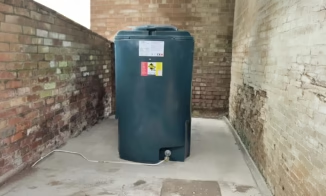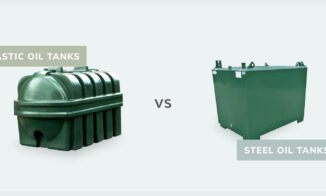Hot Tub Before or After a Workout? Let’s Find Out
Here’s the thing: if you own a hot tub in the UK and you’re also into fitness or sports—whether you’re at the gym five times a week or just enjoy a jog around town—you’ve probably wondered: is it better to use your hot tub before or after exercise?
We’re going to break it down. We’ll weigh the benefits of using a hot tub pre‑workout (think flexibility, warm‑up, focus) versus post‑workout (recovery, reducing soreness, improved rest). Input from sports medicine professionals, guidance on temperature and timing, and smart tips for safe use—this post covers it all.
Why Hot Tubs Matter for Fitness
First, a quick look at why hydrotherapy (heat + buoyancy + massage) is more than just relaxation:
-
Improved circulation: Heat dilates blood vessels, boosting oxygen and nutrient delivery to muscles and helping clear lactic acid. That supports both warm‑ups and post‑exercise recovery.
-
Muscle tension relief: Warm water loosens tight muscles and joints, easing stiffness and lowering DOMS (delayed onset muscle soreness).
-
Buoyancy and jets: Water supports joints and the water jets offer soft‑tissue massage effects similar to professional massage.
-
Mental reset and better sleep: Hydrotherapy calms the nervous system, lowers cortisol and can improve sleep—which matters for training adaptation.
Pre‑Workout Hot Tub Use: Benefits & Best Practice
What it really does:
-
Loosens up muscles and joints – Warm water helps increase flexibility, making stretching easier and reducing injury risk.
-
Enhances circulation before exercise – Blood flow gets primed, so workouts feel more efficient and energy may improve.
-
Promotes mental preparedness – A short pre‑exercise soak can ease anxiety, boost focus, and heighten mind‑body awareness.
How to do it right:
-
Timing: Limit your soak to 10–15 minutes, at most. Too long before exercise can elevate core temperature too much.
-
Water temperature: Around 37–38 °C is ideal—not too hot, to avoid fatigue.
-
Follow it with a light stretch or dynamic warm-up on land.
-
Stay hydrated and towel‑dry before starting your workout.
Post‑Workout Hot Tub Use: Recovery Powerhouse
The tangible benefits:
-
Speeds recovery – Warm immersion and jets flush metabolic by-products, ease inflammation, and help reduce DOMS.
-
Pain relief and soft‑tissue massage – Hydrotherapy acts like a gentle at-home massage, relaxing tight spots without deep pressure.
-
Better sleep – A 15–20 min soak before bedtime can kickstart the body’s natural cooling cycle, improving sleep quality—essential for muscle repair.
-
Reduced stress – The combined physiological and psychological calm promotes long-term recovery gains.
Tips for post-workout use:
-
Wait about 30–60 minutes after exercise to cool down moderately before entering.
-
Limit soak to 15–20 minutes—longer can lead to dizziness or over‑heating.
-
Temperature: Up to 40 °C (but stay comfortable).
-
Rehydrate well before and after.
-
Avoid alcohol or caffeine immediately afterward.
What Do Sports Medicine Pros Say?
Physiotherapists and sports health professionals often recommend both approaches—but with a few caveats. Hot tubs aren’t a one-size-fits-all recovery method, but they can play a major role when used smartly.
There’s also growing interest in contrast hydrotherapy, where hot and cold exposure are alternated in short intervals. A meta-analysis published by the British Journal of Sports Medicine found contrast therapy may reduce soreness and improve circulation. Here’s a helpful explainer on Verywell Health.
And while anecdotal feedback is strong, new clinical research continues to support hydrotherapy’s benefits for athletes. The National Center for Biotechnology Information (NCBI) offers peer-reviewed insights into hydrotherapy’s physiological impact.
Comparison Table: Before vs After
| Goal | Before Workout | After Workout |
|---|---|---|
| Warm-up readiness | Loosens muscles & aids flexibility | Less effective; better for recovery |
| Risk reduction | Lowers injury risk in stretching | Helps reduce inflammation & soreness |
| Recovery acceleration | Minimal | Significant relief in DOMS and swelling |
| Mental benefits | Improves focus | Reduces stress + improves sleep |
| Session timing & length | ~10–15 min at ~37–38 °C | Wait ~30–60 min; soak 15–20 min at ~40 °C |
Who Should Use It?
-
Athletes: Whether amateur or elite, athletes often incorporate hydrotherapy post‑training to manage muscle fatigue and speed up recovery.
-
Gym-goers: Regular hot tub use after resistance or HIIT workouts can reduce muscle tightness and soreness the next day.
-
Casual exercisers: Even moderate activity like walking, swimming, or cycling benefits from improved flexibility and joint support via hydrotherapy.
Risks & Precautions
-
Avoid over‑heating—limit time and monitor temperature.
-
Those with high blood pressure, heart conditions, pregnancy, diabetes, or circulatory issues should consult a GP before use.
-
Avoid soaking immediately after very intense workouts without cooling down or hydrating first.
-
Don’t fall asleep in the tub.
-
Stay within safe temperature range: ideally below 40 °C for longer exposure.
Final Take
So, should you use your hot tub before or after a workout? The real answer: both—but play it smart.
-
A short, gentle soak pre‑workout can loosen muscles, improve flexibility, and get you mentally primed.
-
A post‑workout soak (30–60 min after exercising), at a slightly higher temp, helps reduce soreness, speed healing, and improve sleep.
What this really means is that if you optimise timing, temperature, and session length, you’ll be using your hot tub as a proper fitness recovery tool—not just a luxury add‑on.







